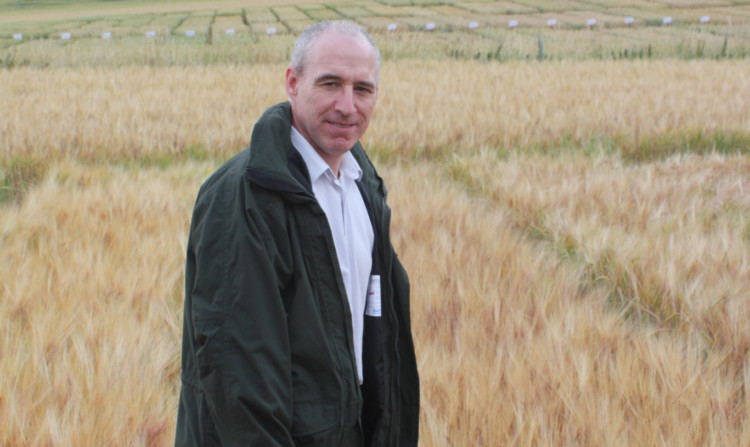The latest recommendations on cereal varieties are now available to growers on the Scotland’s Rural College website.
The SRUC recommended list gives up-to-date advice on the varieties best suited to conditions in Scotland and the north of England.
According to Dr Steve Hoad of SRUC Crop and Soil Systems, this year’s list reflects changes in both the market and growers’ needs.
“As with all new varieties, it is important to check any quality specifications with each customer,” he said.
“Judgments about yield and grain quality should be balanced with other features important to your farm, such as earliness of ripening, disease risk, stiffness of straw and the ability of the plant to cope with ear loss or sprouting caused by bad harvest weather.”
For some growers an additional factor to consider in their choices will be the reformed CAP regulations due to come into effect next year.
As part of the proposed greening of the CAP, farmers must grow at least three different crops in order to support greater biodiversity. Some Scottish growers have complained of being forced to reduce production of a crop for which there is a market in order to comply with environmental concerns.
However, for the purposes of the regulations spring-sown and winter-sown barleys are regarded as different crops, possibly offering some flexibility.
Dr Hoad thought growers would find some promising new names being added to the list over the next two to three years, although they will have to compete with some long-standing favourites.
“Amongst the spring malting barley varieties, four Concerto, Optic, Belgravia and Propino dominate and have filled more than 90% of the maltsters’ demand,” he says. He noted that last year by far the largest intake was with Concerto, at more than 50% market share.
“However, the big four are supported by another group around which there has been either niche or growing interest.
“These are Moonshine, Odyssey, Overture and Glassel.”
KWS Irina and Shaloo are two new spring varieties developed more for brewing than distilling, but they have raised the bar on yield.
Also very high yielding is a new feed barley called Shada.
Farmers faced with having to adapt their regime to comply with forthcoming CAP reforms may be considering if winter-sown barleys can be included in their plantings.
KWS Glacier (added last year) and two new varieties Cavalier and KWS Tower combine high yield and good specific weight.
While barley continues to be the main cereal crop grown in Scotland, wheat is also important.
According to Dr Hoad there is now a wide choice of the Soft Group 4 distilling type wheat varieties.
Last year’s additions to the list, Leeds and Myriad, have been joined by another new entry, Twister. All three of these are approved for use in distilling and look competitive against the more established varieties.
Among the wheat varieties selected for biscuit making, two new varieties Icon and Zulu have been added to the list, and both also offer opportunities in the distilling market.
While this year’s list is complete, those working in the trial sites will continue to select new options.
On that basis several new milling quality winter wheats, as well as new oat and spring wheat varieties, are under consideration, but a decision has been deferred until further information is provided.
